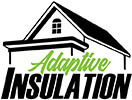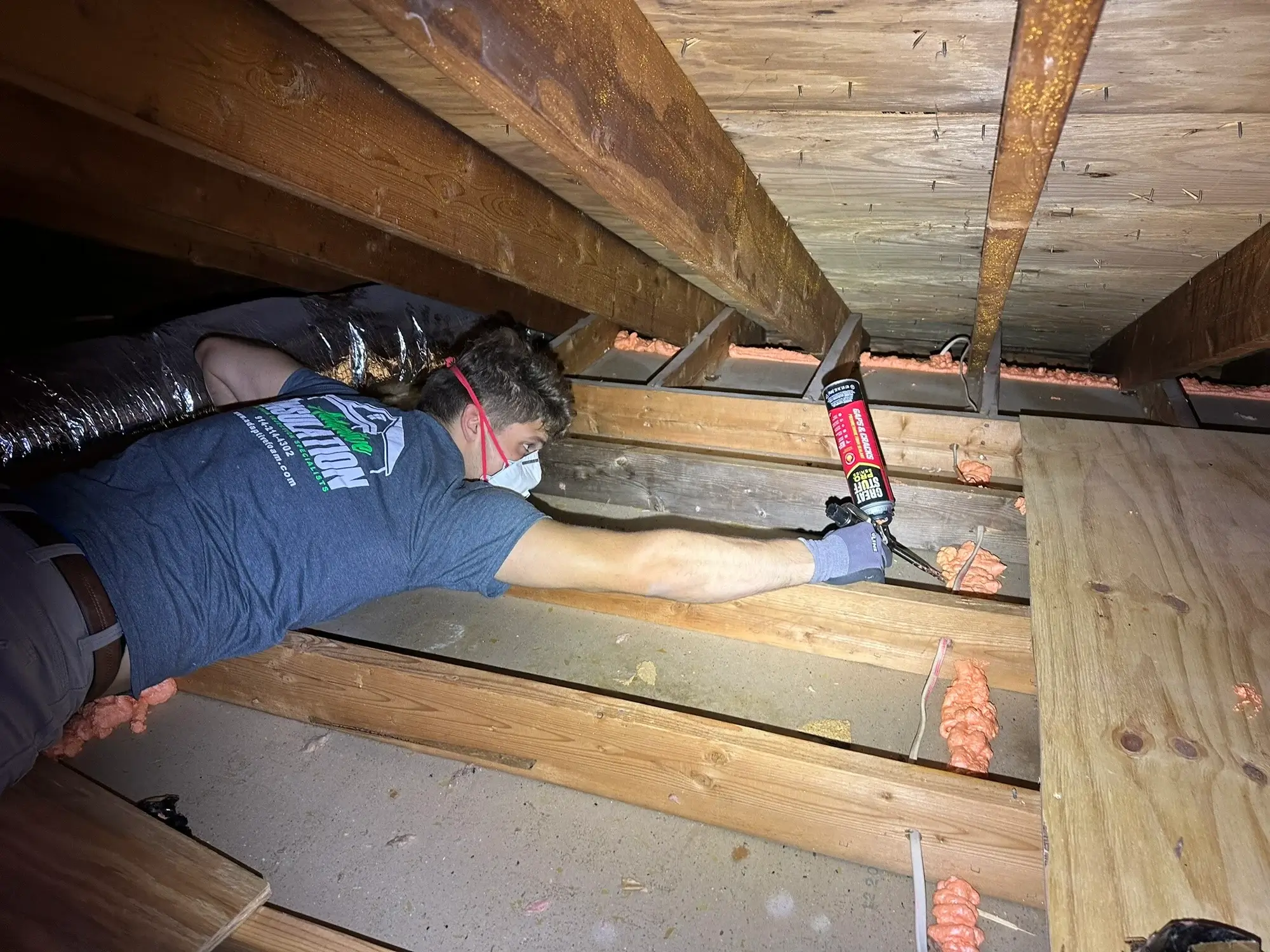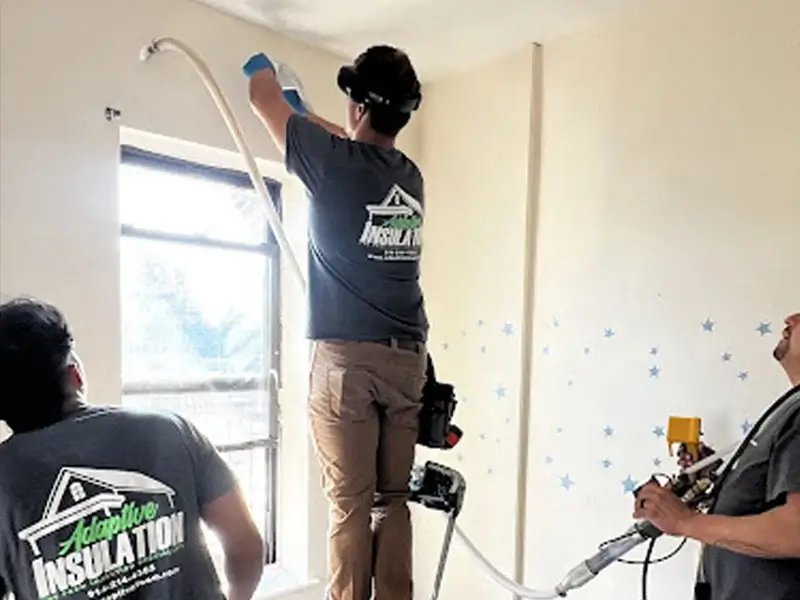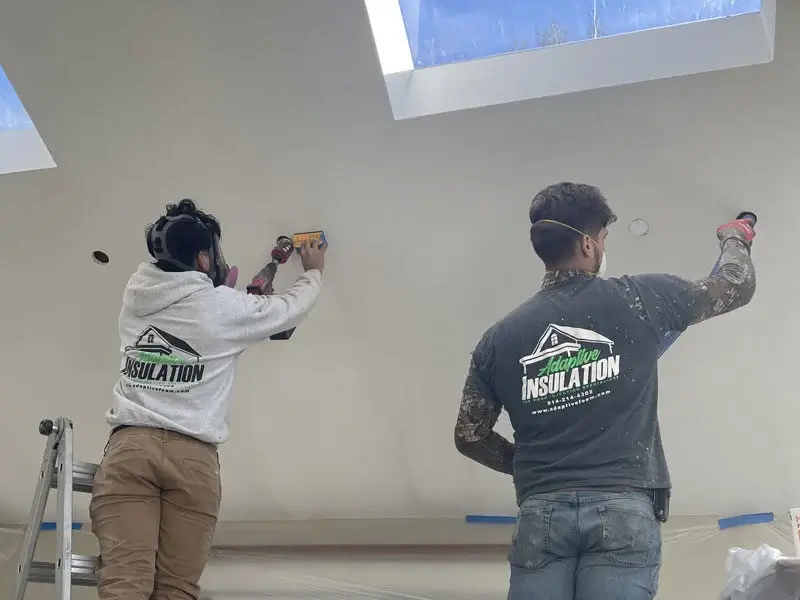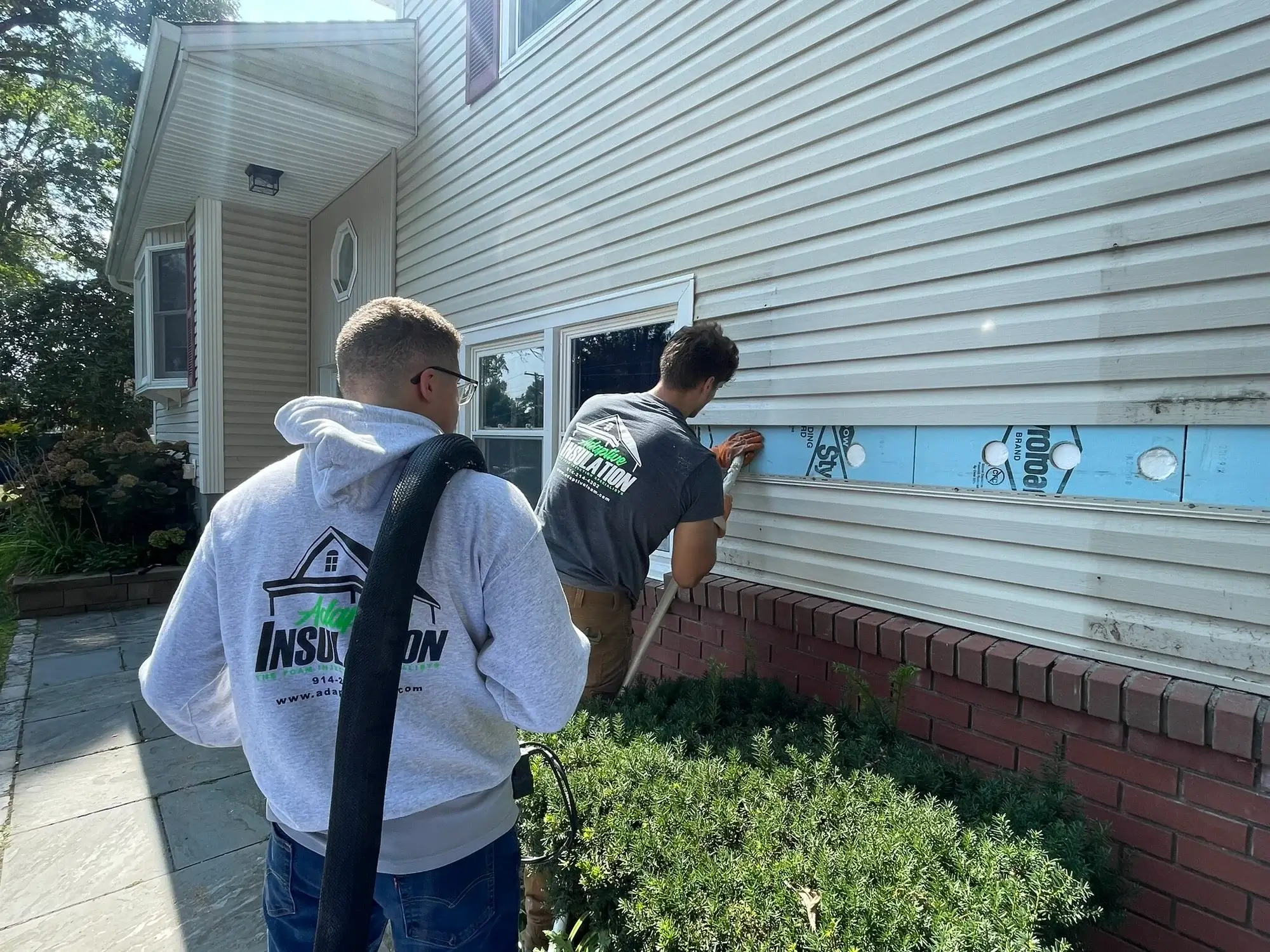
With energy prices on the rise and a growing focus on environmental sustainability, homeowners are increasingly looking for ways to reduce their energy consumption and lower their utility bills. One of the most effective ways to improve energy efficiency in your home is by upgrading its insulation. To encourage homeowners to invest in energy-efficient home improvements, the U.S. federal government has introduced a tax credit of up to $1200 that can be applied to insulation upgrades, including injection foam insulation.
If you’ve been considering reinsulating your home, now is the perfect time to do it—and Adaptive Insulation, a leader in energy-efficient home insulation solutions, can help you take full advantage of the federal tax credit with their cutting-edge injection foam insulation. In this blog, we'll discuss how the $1200 tax credit works, the benefits of using injection foam insulation, and how Adaptive Insulation can help you upgrade your home’s insulation to maximize your savings.
Understanding the $1200 Federal Tax Credit for Insulation
The federal government offers several incentives for homeowners to make energy-efficient upgrades, with insulation improvements being one of the most accessible options. The Residential Clean Energy Property Credit (sometimes referred to as the Energy Efficiency Home Improvement Credit) allows homeowners to claim a tax credit of up to $1200 for qualifying home energy upgrades, including insulation.
A tax credit is a direct reduction of the taxes you owe, making it more financially advantageous than a tax deduction, which simply reduces your taxable income. This means that when you take advantage of the $1200 federal tax credit, you can significantly offset the cost of your insulation project, making it an excellent financial decision.
What Types of Insulation Qualify?
To qualify for the federal tax credit, the insulation materials and installation must meet specific energy-efficiency standards. Fortunately, injection foam insulation, which is one of the most innovative and effective insulation solutions available today, qualifies under these guidelines when installed correctly by a professional company like Adaptive Insulation.
How to Claim the Credit
Claiming the $1200 tax credit is a simple process:
- Schedule an Assessment with Adaptive Insulation to determine the right insulation solution for your home.
- Ensure the insulation products used meet the federal energy-efficiency standards.
- Keep documentation of your purchase and installation costs, which you will need to submit when filing your federal tax return.
- Claim the tax credit on IRS Form 5695 for Residential Energy Credits when you file your taxes.
What Is Injection Foam Insulation?
Injection foam insulation is a high-performance insulation solution designed to fill the gaps and cavities within your home’s walls, ensuring a complete thermal barrier. Unlike traditional insulation materials like fiberglass batts or blown-in cellulose, injection foam is injected into wall cavities and hard-to-reach areas, expanding to fill every nook and cranny. This seamless application ensures maximum insulation coverage, helping to significantly improve your home’s energy efficiency.
Injection foam insulation is especially beneficial for existing homes, as it can be applied without major structural changes. The foam is injected into the walls through small holes that are then patched up, making it a minimally invasive yet highly effective option for reinsulating your home.
Why Choose Injection Foam?
Here are some key reasons why homeowners choose injection foam insulation for their homes:
- Superior Thermal Performance: Injection foam creates an airtight seal, preventing the transfer of heat between the inside and outside of your home. This means your home will stay cooler in the summer and warmer in the winter, reducing the workload on your HVAC system and lowering energy costs.
- Air and Moisture Barrier: Unlike traditional insulation, injection foam acts as both an insulator and a barrier to air and moisture, preventing drafts and condensation buildup. This leads to a more comfortable living environment and helps prevent moisture-related issues like mold growth.
- Soundproofing Benefits: In addition to its thermal properties, injection foam also offers soundproofing benefits, helping to reduce the transmission of noise between rooms and from the outside. This makes it ideal for homeowners looking to create a quieter, more peaceful living environment.
- Long-Term Durability: Injection foam does not degrade, sag, or settle over time, unlike other insulation types. Once installed, it provides long-lasting protection, helping you maintain energy efficiency for years to come.
- Environmentally Friendly: Injection foam is an eco-friendly insulation option. It helps reduce your home’s energy consumption, lowering your carbon footprint. Plus, because it’s made from sustainable materials, injection foam insulation is a green choice for environmentally conscious homeowners.
How Injection Foam Insulation Can Save You Money
Insulating your home with injection foam can lead to substantial long-term savings. Here are some ways in which you can save money by upgrading your insulation:
- Reduced Energy Bills
One of the most immediate benefits of injection foam insulation is a significant reduction in your energy bills. Since injection foam creates an airtight seal, your heating and cooling systems won’t need to work as hard to maintain a comfortable indoor temperature. This leads to reduced energy consumption, with some homeowners seeing as much as 20-50% savings on their heating and cooling costs. - Lower HVAC Maintenance Costs
By making your home more energy-efficient with injection foam insulation, you’ll also reduce the strain on your HVAC system. This can lead to fewer breakdowns and a longer lifespan for your heating and cooling equipment, saving you money on repairs and replacements in the long run. - Increased Home Value
Energy-efficient upgrades like injection foam insulation can also increase your home’s market value. Potential buyers are often willing to pay more for homes with energy-saving features, recognizing the long-term cost benefits. With injection foam insulation from Adaptive Insulation, you’ll not only reduce your energy bills but also enhance the overall value of your property. - Federal Tax Credit
As mentioned earlier, the $1200 federal tax credit is a powerful incentive to reinsulate your home. By choosing injection foam insulation, you can qualify for this credit and lower the upfront cost of your insulation project. Combined with the energy savings you’ll enjoy over time, this makes upgrading your home’s insulation an excellent financial decision.
Why Adaptive Insulation Is the Best Choice for Injection Foam Insulation
When it comes to reinsulating your home, not all insulation companies are created equal. Choosing the right provider is crucial to ensuring that your insulation project meets the necessary standards for the federal tax credit and delivers the maximum energy savings. Here’s why Adaptive Insulation is the best choice for injection foam insulation:
- Expertise in Energy Efficiency
Adaptive Insulation is a trusted leader in home energy efficiency. Their team of insulation experts is highly knowledgeable about the latest insulation products and installation techniques, ensuring that your home receives the most effective insulation solution. Whether you’re dealing with high energy bills, drafty rooms, or uneven temperatures, Adaptive Insulation can tailor their services to meet your specific needs. - High-Quality, Tax-Credit-Eligible Products
The injection foam insulation used by Adaptive Insulation meets or exceeds the federal energy-efficiency standards required for the $1200 tax credit. This means you can be confident that your insulation project will qualify for the credit, maximizing your savings. Plus, their foam insulation products are designed to provide superior long-term performance, ensuring that your home remains energy-efficient for years to come. - Professional Installation
Proper installation is key to ensuring that your insulation performs as expected. Adaptive Insulation’s team of highly trained professionals follows best practices for installing injection foam insulation, ensuring that every cavity is filled and every area of your home is properly sealed. Their attention to detail ensures that your home will be more comfortable and energy-efficient after the insulation upgrade. - Customer-Centric Approach
Adaptive Insulation prides itself on delivering exceptional customer service. From the initial consultation to the final installation, their team will guide you through every step of the process. They’ll answer all of your questions, provide expert recommendations, and ensure that the project is completed to your satisfaction.
How to Get Started with Adaptive Insulation
If you’re ready to take advantage of the $1200 federal tax credit and reinsulate your home with injection foam, the process is simple:
- Contact Adaptive Insulation: Reach out to their team to schedule a consultation. They’ll assess your home’s insulation needs and recommend the best solution.
- Get a Custom Insulation Plan: Based on their assessment, Adaptive Insulation will create a custom insulation plan tailored to your home’s unique layout and energy efficiency goals.
- Schedule the Installation: Once you’ve approved the plan, their team will handle the installation of your new injection foam insulation quickly and efficiently.
- Claim the Tax Credit: After the installation is complete, save your receipts and necessary documentation to claim the federal tax credit on your next tax return.
Reinsulating your home with injection foam insulation is one of the smartest investments you can make in terms of energy savings, comfort, and environmental impact. By taking advantage of the $1200 federal tax credit, you can significantly reduce the cost of your insulation upgrade while enjoying long-term benefits. Partnering with Adaptive Insulation ensures that you receive high-quality, tax-credit-eligible products and professional installation that will maximize your energy savings and comfort for years to come.
Don’t wait to make your home more energy-efficient—contact Adaptive Insulation today and start saving!
